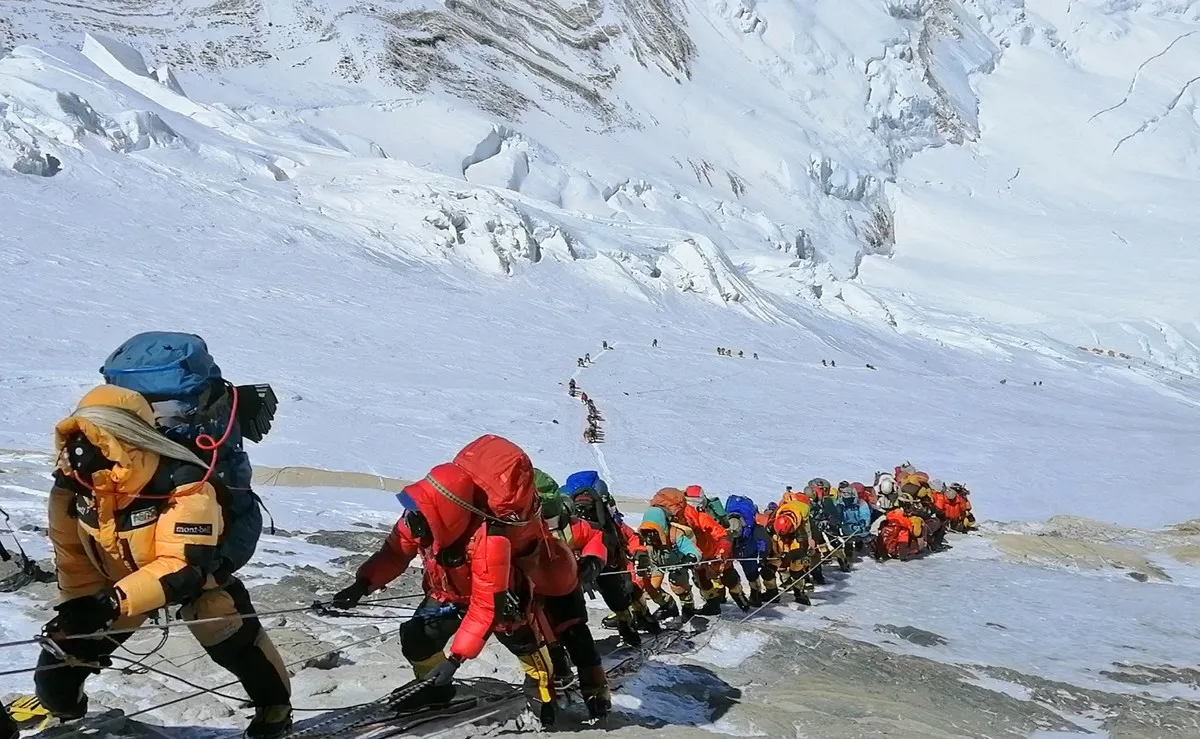12/10/2025
12/10/2025

KATHMANDU, Nepal, Oct 12: Clear skies, calm winds, and sweeping views of Himalayan peaks — this postcard image has long defined autumn climbing in the region. Yet those expectations are now being upended. The monsoon is increasingly stretching into autumn, bringing unpredictable and extreme weather to high-altitude terrain.
In recent years, climatologists have recorded at least one incident of intense rainfall or snowfall late in the season almost every year — a trend that is proving deadly in the mountains.
Last weekend, a sudden blizzard trapped hundreds of trekkers near Everest’s eastern face, at over 4,900 m (16,000 ft). Chinese state media confirmed that by Tuesday, nearly 600 had been rescued; one person died, reportedly from hypothermia and altitude sickness. Similar conditions were reported in Nepal, where a South Korean mountaineer perished on Mera Peak.
Communications were disrupted by heavy rainfall and snowfall. Officials estimate landslides and flash floods across Nepal have claimed around 60 lives over the past week.
“This is highly unusual for October, when we expect skies to remain clear,” said mountain guide Riten Jangbu Sherpa, noting that trekkers in recent years have found themselves caught in sudden storms they did not anticipate.
A shifting monsoon season
Historically, the monsoon in northern India and Nepal ends by mid-September. But data now show that in many recent years, monsoon conditions have persisted well into October. Archana Shrestha, Deputy Director General at Nepal’s Department of Hydrology and Meteorology, described October 4–5’s deluge as “damaging precipitation in a short span of time.” Such events combine torrential rain and heavy snowfall—especially dangerous in high-altitude zones.
At elevation, the result is rapid shifts: blizzards, steep temperature drops, and vanishing visibility. Last weekend, trekkers who had progressed far along their route found their path blocked by deep snow. On Cho Oyu, teams retreated amid whiteout conditions before resuming after the worst passed, according to expedition operator Mingma Sherpa.
Near Everest, stranded trekkers reported battling hypothermia, digging out through snow, and trying to stay awake for fear of being buried in new drifts. Rescue efforts used yaks and horses to push through snow—efforts made all the more desperate by harsh temperatures.
One veteran climber told the BBC that in over a dozen seasonal climbs, he had never seen conditions like this.
Experts point to climate change as intensifying moisture in the atmosphere, which fuels intense precipitation over short periods—unlike the gradual seasonal rains of the past.
Westerly disturbances turbocharging the monsoon
A major factor in recent extremes is the increasing interaction between monsoons and westerly disturbances — low-pressure systems that form in the Mediterranean and bring cold air eastward. When these systems interact with warm, saturated monsoon air, the result is amplified precipitation events.
Historically, westerly disturbances arrived in winter (December–March). Now they are appearing during monsoon and autumn, turbocharging storms. In early October, meteorological authorities in Nepal said a westerly disturbance helped feed a low-pressure monsoon tail that dumped snow and rain over eastern Nepal near Everest.
In a warming climate, this interaction is shifting precipitation patterns upward. Clouds now are pushed higher into the Himalayas and even the Tibetan Plateau, regions that previously remained relatively dry. A June study in Nature noted that warming and monsoon‑westerly coupling are turning the Qinghai‑Tibet Plateau wetter and more volatile.
“The reliability of seasonal patterns is gone,” said Logan Talbott, chief guide with Alpenglow Expeditions. “We can’t assume conditions will repeat from one season to the next. Flexible scheduling, real-time decision-making, and experienced leadership have become essential.”


